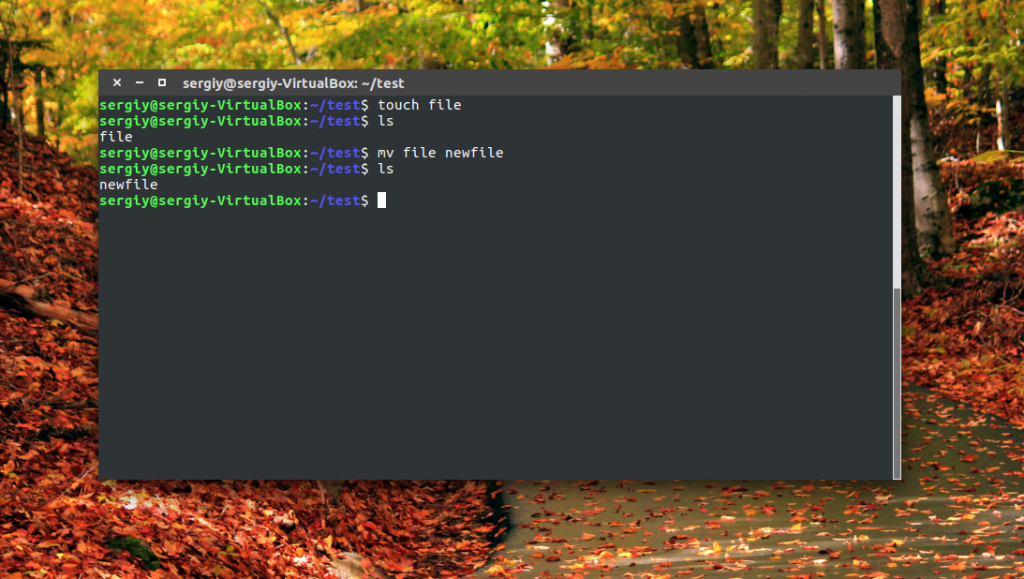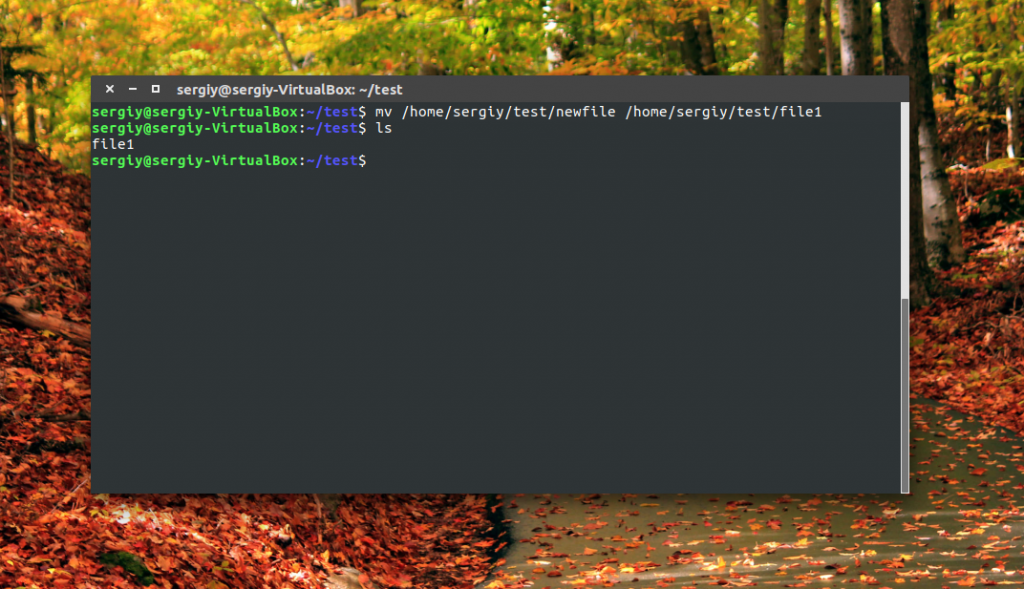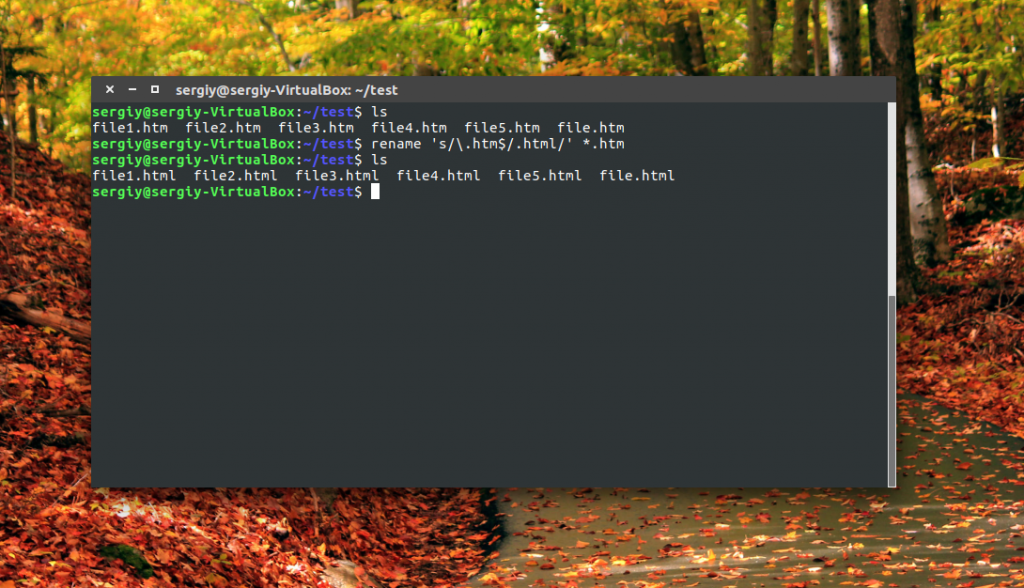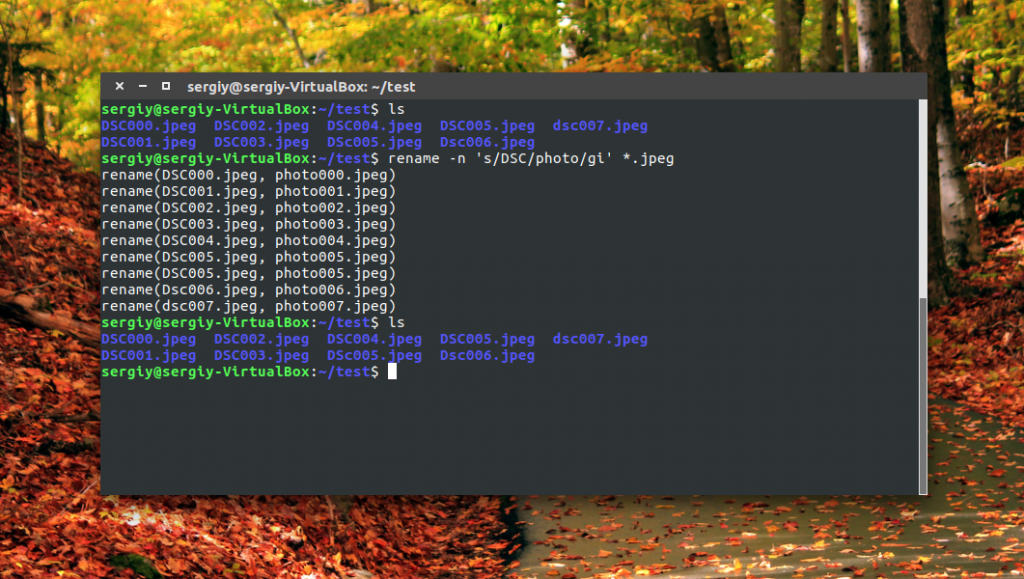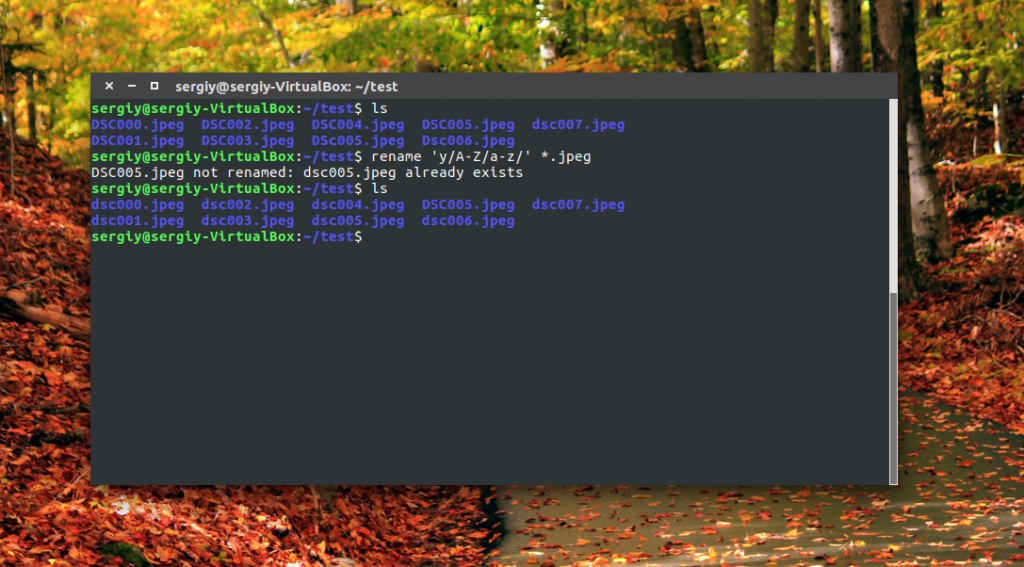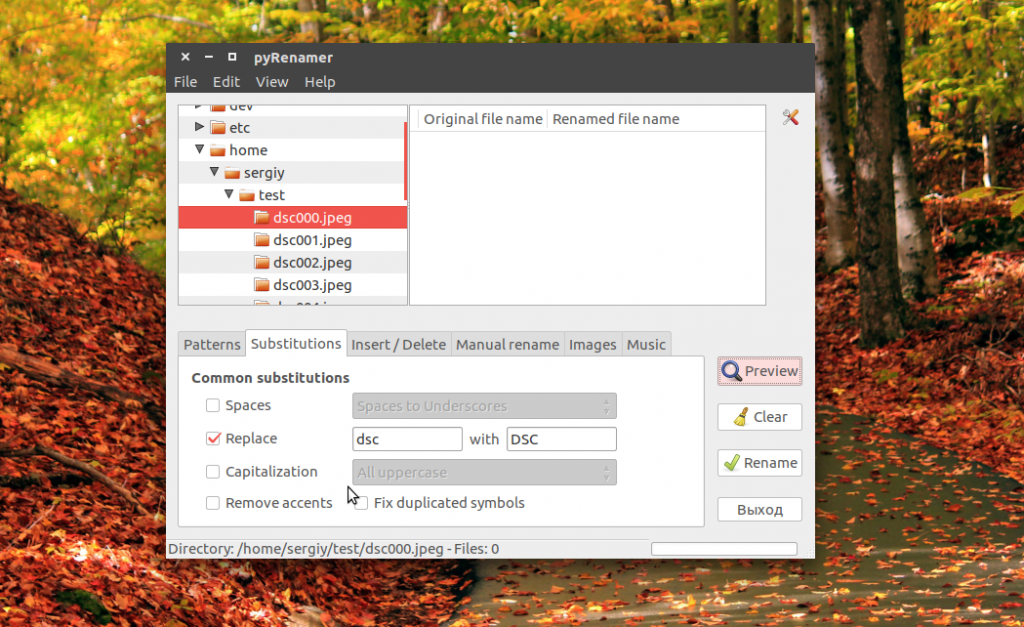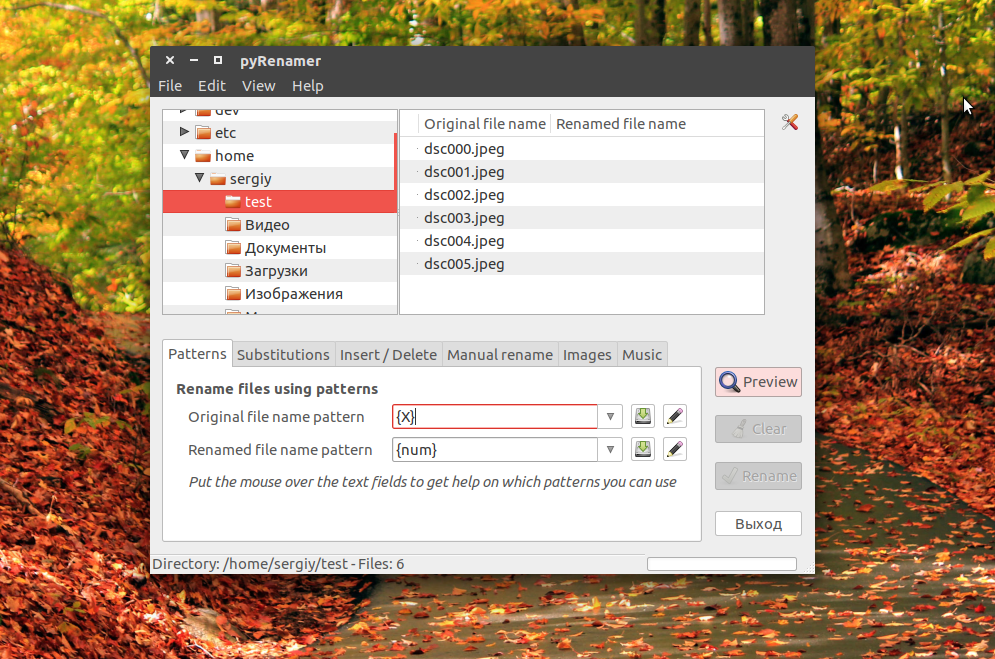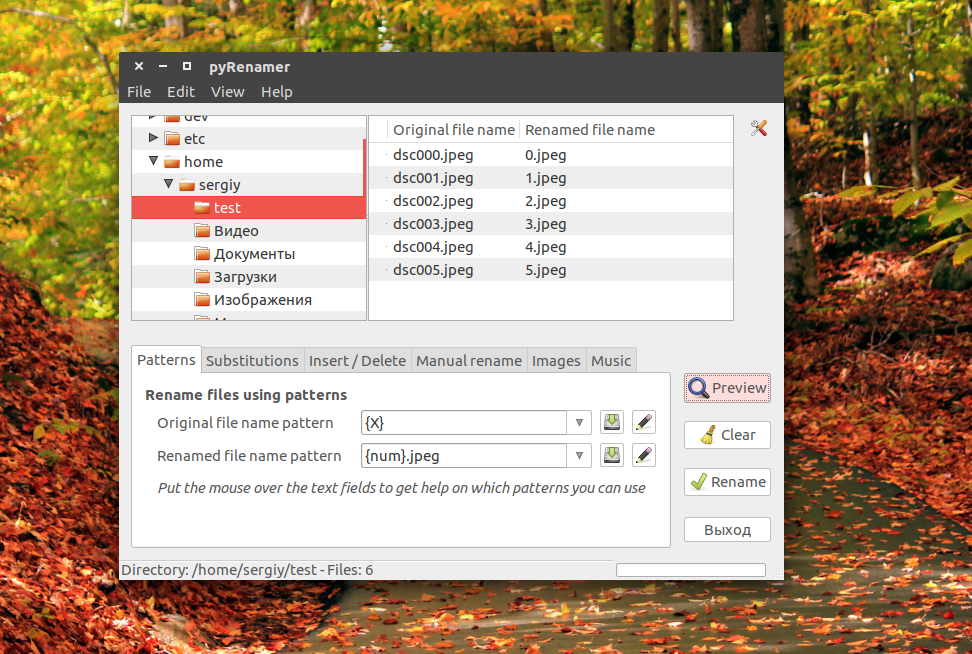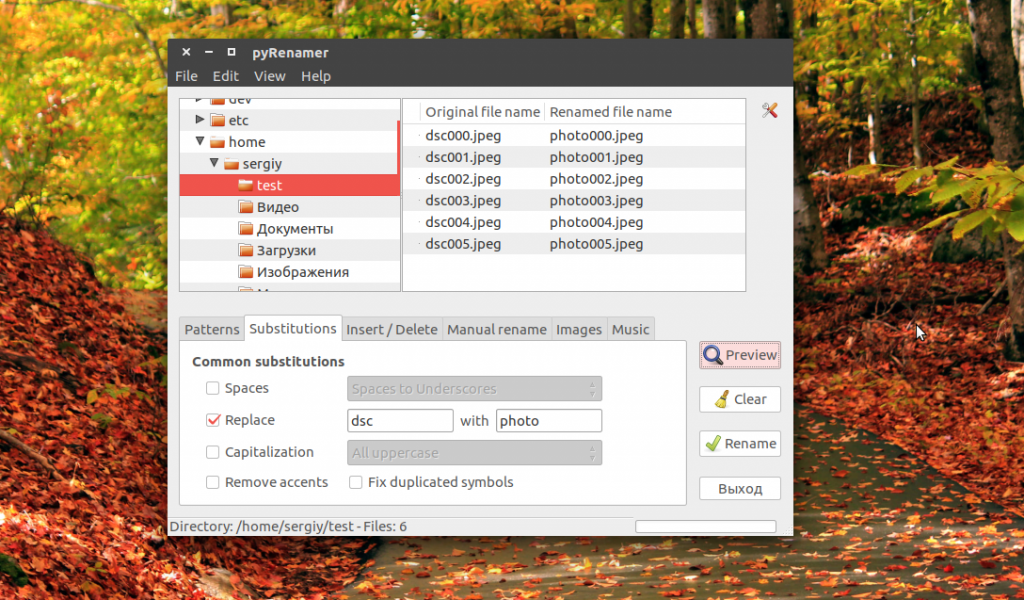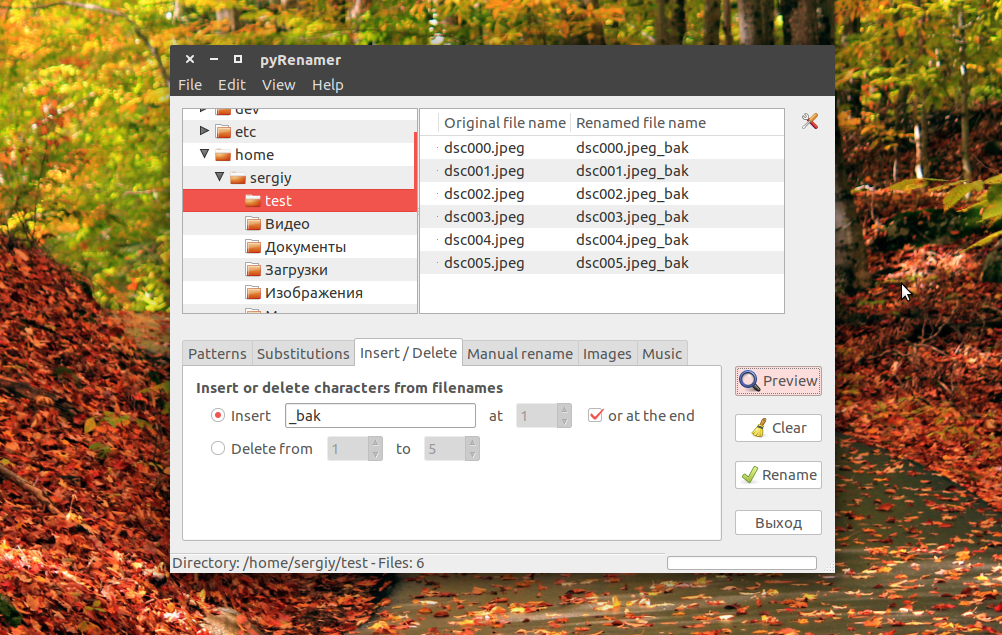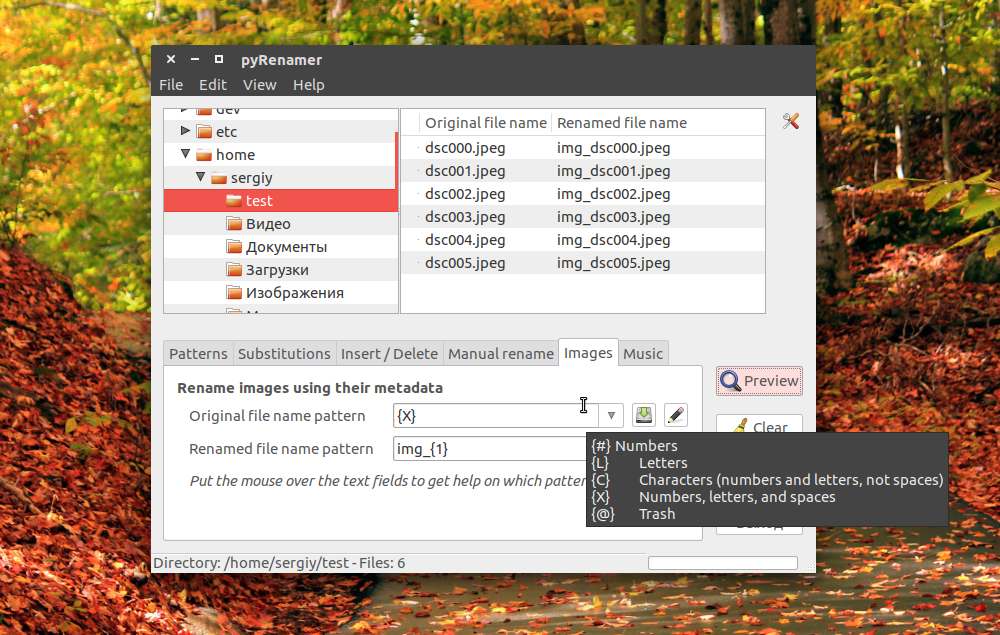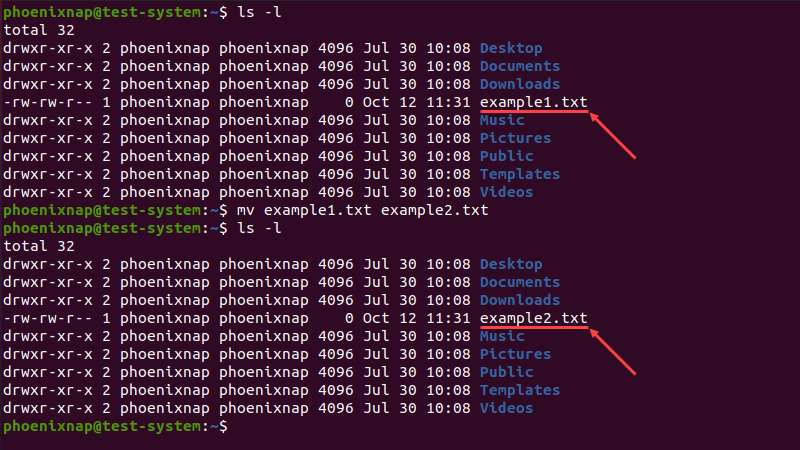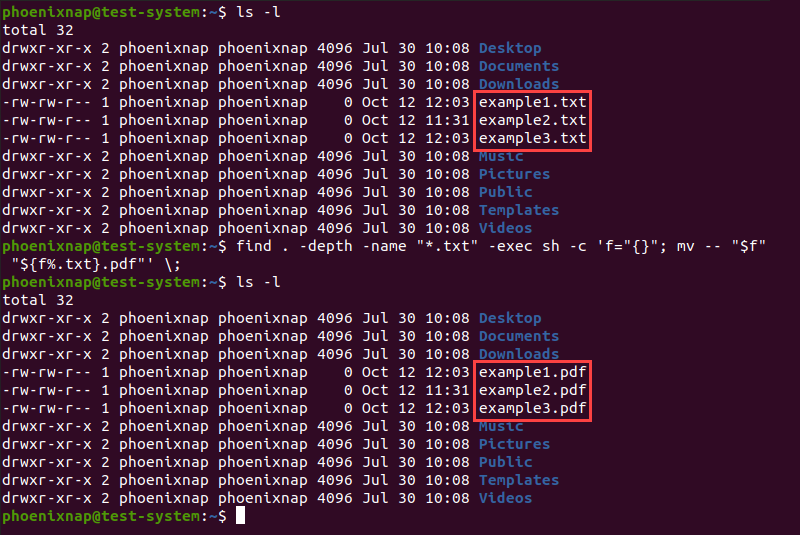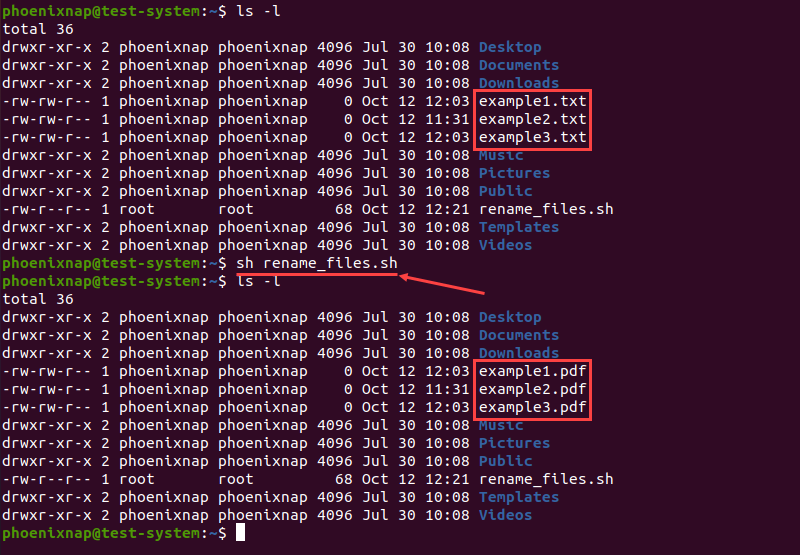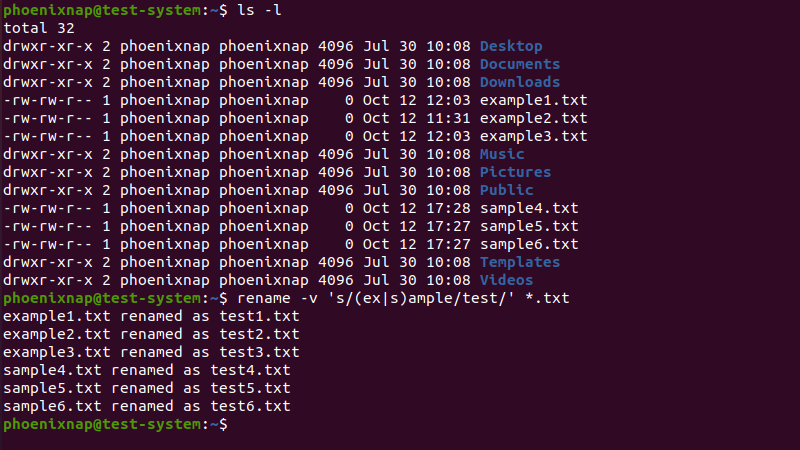- Как переименовать файл Linux
- Как переименовать файл в Linux с помощью mv
- Переименование файлов Linux с помощью rename
- Переименование файлов в pyRenamer
- Выводы
- How to Rename Files in Linux
- Rename Files with the mv Command
- Rename a Single File with the mv Command
- Rename Multiple Files with the mv Command
- Rename File with the rename Command
- How to Install the rename Command
- rename Command Syntax and Options
- rename Command Examples
Как переименовать файл Linux
Переименование файла linux — очень простая операция, но для новичков в Linux эта задача может оказаться сложной. Также здесь есть несколько нюансов и возможностей, которые желательно знать уже опытным пользователям, например, массовое переименование. В графическом интерфейсе все делается очень просто, но настоящую гибкость дает терминал.
В этой статье мы рассмотрим как переименовать файл в Linux с помощью терминала, рассмотрим такие возможности, как массовое пакетное переименование файлов, а также регулярные выражения.
Как переименовать файл в Linux с помощью mv
В Linux существует замечательная стандартная утилита mv, которая предназначена для перемещения файлов. Но по своей сути перемещение — это то же самое, что и переименование файла linux, если выполняется в одной папке. Давайте сначала рассмотрим синтаксис этой команды:
$ mv опции файл-источник файл-приемник
Теперь рассмотрим основные опции утилиты, которые могут вам понадобиться:
- -f — заменять файл, если он уже существует;
- -i — спрашивать, нужно ли заменять существующие файлы;
- -n — не заменять существующие файлы;
- -u — заменять файл только если он был изменен;
- -v — вывести список обработанных файлов;
Чтобы переименовать файл linux достаточно вызвать утилиту без дополнительных опций. Просто передав ей имя нужного файла и новое имя:
Как видите, файл был переименован. Вы также можете использовать полный путь к файлу или переместить его в другую папку:
mv /home/sergiy/test/newfile /home/sergiy/test/file1
Обратите внимание, что у вас должны быть права на запись в ту папку, в которой вы собираетесь переименовывать файлы. Если папка принадлежит другому пользователю, возможно, нужно будет запускать программу через sudo. Но в таком случае лучше запускать с опцией -i, чтобы случайно ничего не удалить.
Переименование файлов Linux с помощью rename
В Linux есть еще одна команда, которая позволяет переименовать файл. Это rename. Она специально разработана для этой задачи, поэтому поддерживает такие вещи, как массовое переименование файлов linux и использование регулярных выражений. Синтаксис утилиты тоже сложнее:
$ rename опции ‘s/ старое_имя / новое_имя ‘ файлы
$ rename опции старое_имя новое_имя файлы
В качестве старого имени указывается регулярное выражение или часть имени которую нужно изменить, новое имя указывает на что нужно заменить. Файлы — те, которые нужно обработать, для выбора файлов можно использовать символы подставки, такие как * или ?.
- -v — вывести список обработанных файлов;
- -n — тестовый режим, на самом деле никакие действия выполнены не будут;
- -f — принудительно перезаписывать существующие файлы;
Например, переименуем все htm файлы из текущей папки в .html:
Символ звездочки означает, что переименование файлов linux будет выполнено для всех файлов в папке. В регулярных выражениях могут применяться дополнительные модификаторы:
- g (Global) — применять ко всем найденным вхождениям;
- i (Case Censitive) — не учитывать регистр.
Модификаторы размещаются в конце регулярного выражения, перед закрывающей кавычкой. Перед тем, как использовать такую конструкцию, желательно ее проверить, чтобы убедиться, что вы не допустили нигде ошибок, тут на помощь приходит опция -n. Заменим все вхождения DSC на photo в именах наших фотографий:
rename -n ‘s/DSC/photo/gi’ *.jpeg
Будут обработаны DSC, DsC и даже dsc, все варианты. Поскольку использовалась опция -n, то утилита только выведет имена изображений, которые будут изменены.
Можно использовать не только обычную замену, но и полноценные регулярные выражения чтобы выполнить пакетное переименование файлов linux, например, переделаем все имена в нижний регистр:
Из этого примера мы видим, что даже если такой файл уже существует, то он перезаписан по умолчанию не будет. Не забывайте использовать опцию -n чтобы ничего случайно не повредить.
Переименование файлов в pyRenamer
Если вы не любите использовать терминал, но вам нужно массовое переименование файлов Linux, то вам понравится утилита pyrenamer. Это графическая программа и все действия здесь выполняются в несколько щелчков мыши. Вы можете установить ее из официальных репозиториев:
sudo apt install pyrenamer
В окне программы вы можете видеть дерево файловой системы, центральную часть окна, где отображаются файлы, которые будут изменены, а также панель для указания параметров переименования.
Вы можете удалять или добавлять символы, переводить регистр, автоматически удалять пробелы и подчеркивания. У программы есть подсказки, чтобы сделать ее еще проще:
Опытным пользователям понравится возможность pyRenamer для переименования мультимедийных файлов из их метаданных. Кроме того, вы можете переименовать один файл если это нужно. Эта утилита полностью реализует функциональность mv и remove в графическом интерфейсе.
Выводы
В этой статье мы рассмотрели как переименовать файл в консоли linux. Конечно, есть и другие способы, например, написать скрипт, или использовать файловые менеджеры. А как вы выполняете сложные операции по переименованию? Напишите в комментариях!
Обнаружили ошибку в тексте? Сообщите мне об этом. Выделите текст с ошибкой и нажмите Ctrl+Enter.
How to Rename Files in Linux
Linux provides several options for renaming files, including using the GUI and multiple dedicated terminal commands. This makes it relatively easy to rename individual files, but it can be challenging to rename multiple files at once.
In this tutorial, we will go over different commands you can use in the Linux terminal to rename files in Linux.
- A system running a Linux distribution
- An account with sudo privileges
- Access to the terminal window/command line
- Access to a text editor, such as Vim or Nano
Rename Files with the mv Command
The Linux mv (move) command is used to move files and directories from the terminal. It uses the following syntax:
mv [options] [source] [destination]If you specify a directory as the destination when using the mv command, the source file moves to that directory. If the destination is another file name, the mv command renames the source file to that name instead.
Note: Learn more about using the mv command in our guide to moving directories in Linux.
Rename a Single File with the mv Command
Using the mv command with its default syntax allows you to rename a single file:
mv [options] [current file name] [new file name]For example, if we want to rename example1.txt into example2.txt, we would use:
mv example1.txt example2.txtSince there is no output if the command is successful, we are using the ls command to check if the name is changed:
Rename Multiple Files with the mv Command
On its own, the mv command renames a single file. However, combining it with other commands allows you to rename multiple files at the same time.
One method is to use the find command to select multiple files with a similar name, then use the mv command to rename them:
find . -depth -name "[current file name element]" -exec sh -c 'f="<>"; mv -- "$f" "$[new file name element]"' \; Using this syntax, the find command defines an element of the current file name as the search parameter. Next, -exec executes the mv command on any files that match the search, changing their current filenames to the new one.
For instance, if we have example1.txt, example2.txt, and example3.txt and want to change the extension to .pdf:
find . -depth -name "*.txt" -exec sh -c 'f="<>"; mv -- "$f" "$.pdf"' \;Another method is to use the mv command as a part of a for loop in a bash script.
Using the same example, start by creating and opening a bash script file using a text editor such as Nano:
Add the following lines to the script:
#!/bin/bash for f in *.txt; do mv -- "$f" "$.pdf" done - The first line instructs the script to search for all the files in the current directory ending with .txt.
- The second line uses the mv command on each file found to replace the .txt extension with .pdf.
- The third line ends the loop segment.
Press Ctrl+X, then type Y and press Enter to save the changes to the script and exit.
Use the sh command to execute the script:
Note: Learn how to compare two files using the diff command.
Rename File with the rename Command
The rename command is used to rename multiple files or directories in Linux. It offers more features than the mv command but can be more challenging to use since it requires basic knowledge of Perl expressions.
How to Install the rename Command
On many Linux distributions, the rename command is not available by default. If your system is missing the rename command, install it with:
- For Ubuntu and Debian, use sudo apt install rename
- For CentOS and Fedora, use sudo yum install prename
- For Arch Linux, use sudo pacman -S rename
rename Command Syntax and Options
There are three types of Perl regular expressions: match, substitute and translate. The rename command uses substitute and translate expressions to change file and directory names.
Substitute expressions replace a part of the filename with a different string. They use the following syntax:
rename [options] 's/[filename element]/[replacement]/' [filename]With this syntax, the command renames the file by replacing the first occurrence of the filename element with the replacement. In the command above:
- rename : Invokes the rename command.
- [options] : Provides an optional argument that changes the way the command executes.
- s : Indicates a substitute expression.
- [filename element] : Specifies the part of the filename you want to replace.
- [replacement] : Specifies a replacement for the part of the current filename.
- [filename] : Defines the file you want to rename.
A translate expression translates one string of characters into another, character for character. This type of expression uses the following syntax:
rename [options] 'y/[string 1]/[string 2]/' [filename]An example of a rename command using a translate expression:
In this example, every a character in the filename is replaced by an x, every b by a y, and every c by a z.
The rename command uses the following options:
- -a : Replaces all the occurrences of the filename element instead of just the first one.
- -f : Forces an overwrite of existing files.
- -h : Displays the help text.
- -i : Displays a prompt before overwriting existing files.
- -l : Replaces the last occurrence of the filename element instead of the first one.
- -n : Performs a dry run, making no permanent changes. Best combined with the verbose output ( -v ).
- -s : Renames the target instead of the symlink.
- -v : Shows a verbose version of the output.
- -V : Displays the command version.
rename Command Examples
1. Change File Extension
Returning to our last example, to change the file extension from .txt to .pdf, use:
2. Replacing a Part of a Filename
Replacing a different part of the filename follows the same syntax. To rename example1.txt, example2.txt, and example3.txt to test1.txt, test2.txt, and text3.txt, use:
rename -v 's/example/test/' *.txt3. Delete a Part of a Filename
The rename option also allows you to delete a part of the filename by omitting the replacement part of the expression. For instance, if we want to shorten example into ex:
4. Rename Files with Similar Names
Another use for the rename option is to rename files with similar names. For instance, if we want to rename files with example and sample in their name to test:
rename -v 's/(ex|s)ample/test/' *.txt5. Rename Files Character-by-Character
The rename command also allows you to use translate expressions to rename files on a character-by-character basis. For instance, if you want to rename multiple files named example file by replacing the blank space with an underscore (_):
6. Convert Lowercase Characters
To convert lowercase characters in filenames into uppercase characters, use:
7. Convert Uppercase Characters
The reverse also works if we switch the order of the uppercase and lowercase characters in the expression:
Note: Be careful when changing the character case, as this also changes the file extension.
After reading this tutorial, you should be able to rename files using the mv and rename commands in Linux.
Learn more about using Linux commands in our Linux Commands Cheat Sheet.
